
views
Applying a Shoulder Compression Wrap

Ensure that a compression wrap is an appropriate treatment. Tightly wrapped bandages can reduce swelling and increase circulation, but can also risk worsening an injury that should not be compressed. Shoulder injuries that typically benefit from this treatment are those caused by repetitive stress such as weight lifting, golf swings, or volleyball serves, or mild injuries experienced while playing sports or falling. If you’re unsure whether a different form of treatment may be more appropriate, see the “Knowing When to Get Professional Attention” section of this article. It can be difficult to wrap a shoulder because it's not good to put a lot of pressure on the armpit area. You might consider another treatment like icing the area, instead. Do not use a compression wrap on an injured person to try to stabilize the shoulder during transportation to the hospital. If new pain or tingling occurs during the wrapping process, remove the wrap immediately and see a healthcare professional. Use caution when applying compression to areas where there is severe peripheral artery disease or a severe infection. Also be aware of any allergies to certain materials, such as latex.
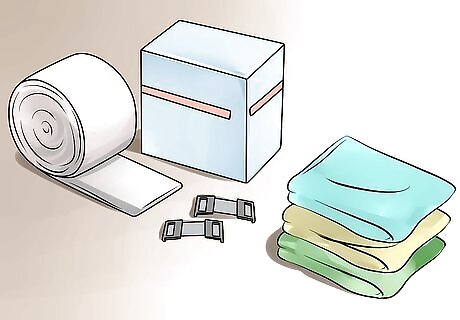
Procure the materials you’ll need to wrap the shoulder. You’ll need a roll of compression bandage, bandage clips or pins, and a cloth long enough to serve as a sling. Wash your hands with an antibacterial soap and clean water before touching the injury or any of the medical supplies. Alternatively, you can purchase premade shoulder compression wraps. Many of these include built-in pockets for heating or icing implements. Try on a few to ensure you find one that comfortably fits.
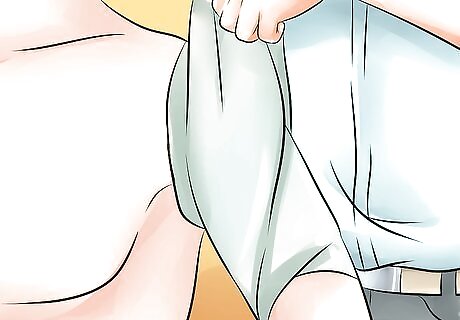
Wrap the shoulder tightly and carefully. Position the end of the compression bandage on top of the injured shoulder, wrapping backwards around the armpit twice. Unroll the bandage as needed, making sure to keep the end of the bandage in place on their shoulder blade. As you complete the second wrap go down and across the back, beneath the other arm, and around the chest. Make sure the bandage is snug but not so tight that the person cannot breathe.
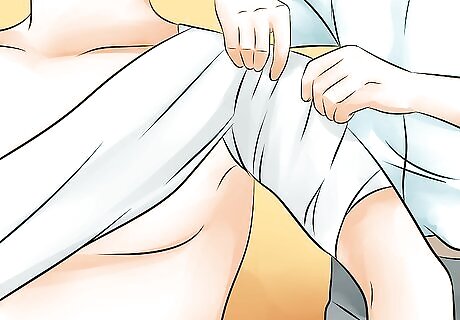
Repeat the shoulder wrap. Wrap around the shoulder through the armpit again, and continue wrapping onto the bicep for added support. Ensure the wrap is snug enough to provide sufficient compression to stimulate the flow of blood to the area.

Secure the end of the compression. Finish wrapping the bandage by pinning the wrap in place where the pins will be safe and secure. At this point, you also need to ensure you have not compressed the muscle tissue too much, as this may detrimentally reduce blood flow (the opposite of what you hope the wrap will achieve). Any numbness indicates that you’ve the wrapped the shoulder too tightly and need to re-wrap the shoulder a bit more loosely. To ensure the compression bandage is not too tight, check the circulation of the affected arm by pinching a fingertip (including the nail in the pinch) for about two seconds. After about two more seconds, the nail of the pinched finger should return to its normal pinkish color. If it takes more than two seconds for the pinched nail to turn back, the blood flow may be ineffective because of a tight compression bandage. Remove and reapply the compression bandage until it is snug but not too tight. If there is any pain, it should start to go down after you apply the bandage. If there is an increase in pain, then redo the wrapping.
Stabilizing the Shoulder and Reducing Swelling

Place the arm in a sling. Using a sling reduces movement of the arm and the injured shoulder while it heals. Aside from purchasing an appropriately-sized sling, you can also make one with a meter-length cloth. Fold the cloth diagonally, arranging it into an elongated triangle that can be wrapped beneath the forearm of the injured arm and secured around the opposite shoulder. Secure the injured arm at a comfortable angle across the person’s chest (roughly horizontal), with the sling’s strap over the opposite shoulder. Perform this maneuver as gently as possible to avoid straining the injured arm.
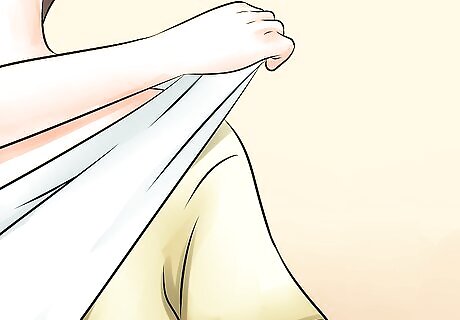
Adjust the sling as needed. It is important to make sure that the sling feels comfortable, so you may need to make some adjustments. The entire forearm up to the hand should be supported by the sling. The sling should not be too tight or placed too high up either. If the sling is too high, then you may experience discomfort and tension in your shoulder.
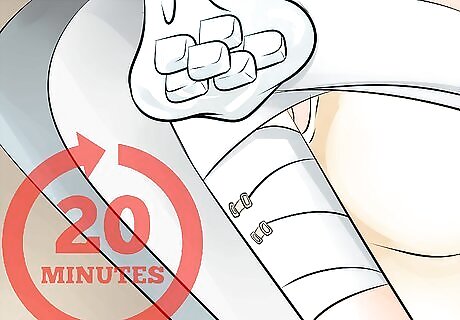
Ice the injured shoulder if recently injured. The cold temperature will actually reduce blood flow to the injured shoulder, which can help reduce any pain and swelling following an injury. Icing with compression is more effective in reducing tissue temperature than icing alone. Wrap the ice pack in a towel or other cloth before wrapping it to your shoulder as directed previously, though with slightly less compression. Apply the cold pack for no more than 20 minutes. For the best results, remove the cold pack after 20 minutes, let the injured area rest for 20 minutes and then reapply the cold pack for another 20 minutes. If the injured shoulder becomes numb at any point, remove the cold pack and repeat the compression wrap process before re-applying the cold compress. Do not apply ice directly to the surface of the skin. This can lead to an increased risk of frostbite. Always wrap the ice pack in a towel first.
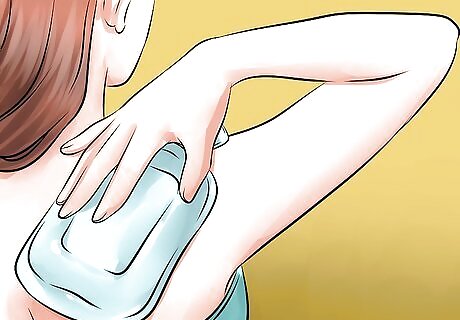
Shift to a hot compress after 48 hours. A hot compress will stimulate blood flow to the injured shoulder, which is vital to the recovery process. This will also relax the muscles and reduce any muscle pain. A hot compress can also improve the flexibility of the tendons and ligaments in the injured shoulder. Do not use a hot compress if the injured shoulder is swollen. It may cause more swelling. Hot compresses are available in multiple forms. Some create warmth via electric power, while others need to be microwaved or simply shaken. A rubber hot water bottle is best. Whatever you use, be careful that it does not become dangerously hot. As with a cold press, wrap or hold the hot compress in some sort of cloth before bandaging it to the shoulder as previously directed, though again, with less compression than you had used without an icing or heating element. Only apply a hot compress to the injured area for 20 minutes at a time.
Knowing When to Get Professional Attention
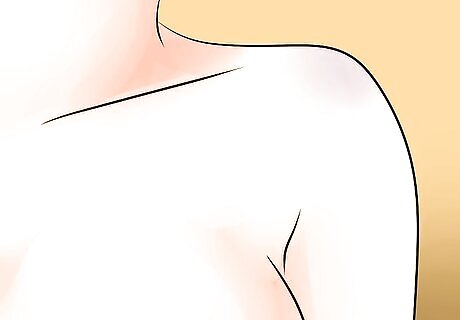
Seek medical attention for discoloration, numbness, or tingling. These symptoms may indicate a serious injury that cannot be wrapped at home and must be looked at by a doctor, who may suggest other treatment options, such as surgery. Bluish discoloration, numbness, tingling, prickling, stinging or any odd sensations felt in the injured shoulder likely indicate insufficient blood and oxygen supply to the area. See a doctor if you experience any of these sensations.
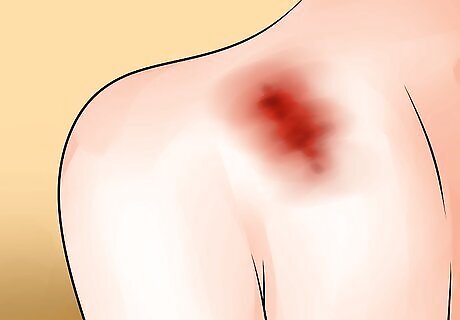
Get medical attention for open wounds on or near your shoulder. An open wound indicates significant force placed on the shoulder during a fall or accident, and you may not have recognized the internal damage to your shoulder. The skin may even have been punctured by a broken bone, which definitely necessitates professional medical attention.

See an orthopedic specialist to help identify a persistent shoulder injury. An orthopedic specialist can help identify the type and severity of your injury. They will also be able to provide you the best advice in terms of treatment options, including specific ways to wrap and compress a shoulder.



















Comments
0 comment